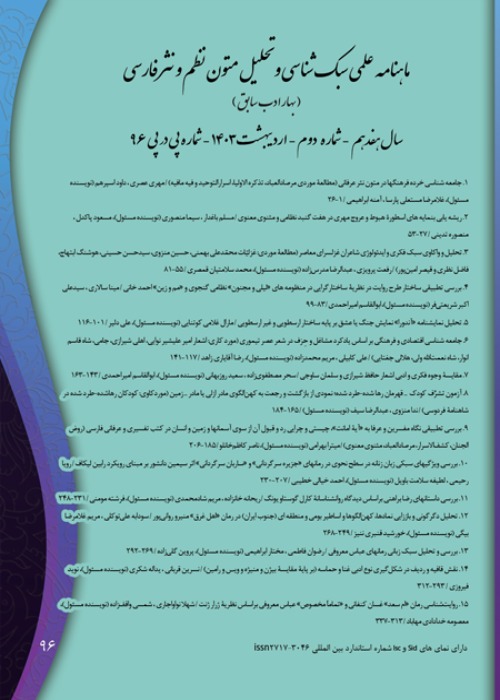Sociology of the Dominant Species of the Crowds and Their Prominent Traits in Rumi's Mathnavi
Human beings are the essential element in the formation of society, and the study of literary texts to discover how the poet views the people around him is an important issue. In this context, the salient traits of people that lead them to different sociological communities are the most fundamental points. The research purpose is to study Rumi"s Mathnavi and determine the types of communities. They include theatrical, active, riotous, listener-spectator, rebellious, fearful and popular. Another objective is to specify the most prevailing type of community and its salient features.
It is a library study that employs a descriptive-comparative analysis method. The general theory of the research is content analysis. Cohen"s views provide the theoretical underpinnings of sociological discourse. The textual body of this research is formed from a thorough investigation of Mathnavi to extract poetic evidence in which the words Populace, People, and Public refer to human society.
Rumi comments on human communities in almost two percent of the verses of his Mathnavi. From a quantitative point of view, the word "populace" has been used more by Rumi than the words "people" and "public". In Mathnavi, the most frequent types of human community based on the use of the word "Populace" are first theatrical and then public and the most dominant attribute of them is that they are worshipers. Based on employing the word "people", Rumi considers people as plebs most frequently, while their prominent attribute is being spectators and listeners; It means being passive. Based on the word "Populace", the human community is also plebs, and their most obvious attribute is their diversity, in Rumi"s view.
According to Rumi, the predominant species of the congregation is the "populace" type, and apart from a few pieces of evidence, he describes them with negative attributes. This approach has a Quranic background
Rumi’s Mathnavi , Sociology , Populace , People , Public
- حق عضویت دریافتی صرف حمایت از نشریات عضو و نگهداری، تکمیل و توسعه مگیران میشود.
- پرداخت حق اشتراک و دانلود مقالات اجازه بازنشر آن در سایر رسانههای چاپی و دیجیتال را به کاربر نمیدهد.


